When it comes to gardening, there are a lot of myths and misconceptions. One of the most common is whether or not you can use potting soil in the ground. People seem to be divided on this issue – some say that it’s perfectly fine, while others believe that it will kill your plants. So, what’s the truth? This blog post will explore both sides of the debate and help you decide what’s best for your garden!
What Should You Use to Fill Your Garden?
Garden Soil and Topsoil
Garden soil and topsoil are the foundation of any garden, as they act as a medium for plants to draw nutrients. When it comes time to fill your garden space with soil, look for a quality garden soil or topsoil blend that will help your plants thrive. Garden soils and topsoils should be light and airy, allowing for good drainage and aeration. The soil should also contain plenty of organic matter such as compost, manure, peat moss, or shredded leaves to provide essential nutrients that promote healthy growth in plants.
Mulch
Mulch is an invaluable tool for gardeners, as it helps to regulate soil temperatures and retain moisture. Mulch is made from a variety of materials such as wood chips, bark, newspaper, or plastic, and can be applied directly to the surface of your garden beds. Adding mulch to your garden will also help suppress weed growth and protect plants from extreme weather conditions.
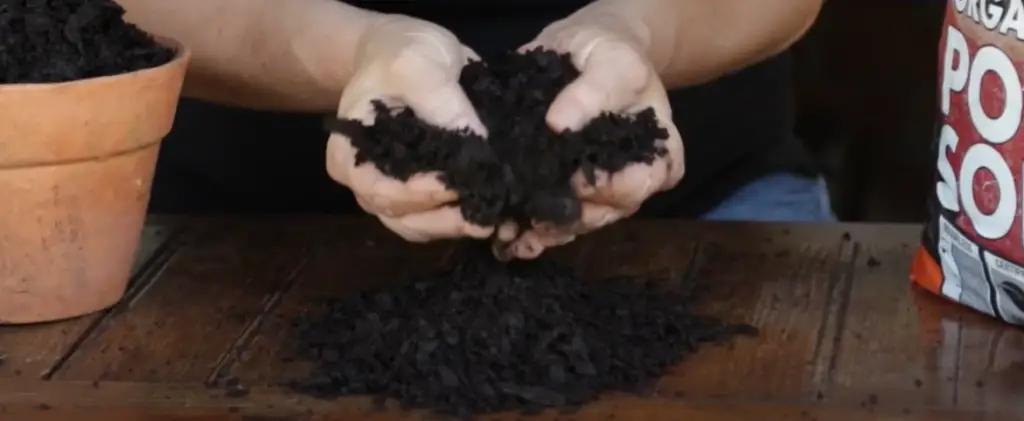
Fertilizers
Fertilizers are essential for providing plants with the nutrients they need to survive and thrive. When choosing a fertilizer for your garden, look for one that contains balanced amounts of nitrogen, phosphorus, and potassium to give your plants the nutrition they need without causing any harm. Fertilizers come in many different forms, including granular products that you spread over the soil surface, liquid products that you spray onto plants, and slow-release products that are worked into the soil.
Pest Repellents
To keep your garden safe from pests and diseases, it’s important to use pest repellents. There are many different types of pest repellents available, including organic options such as garlic or hot pepper sprays. Other non-organic options include insecticides and herbicides that can be used to control specific pest populations. Be sure to read labels carefully before using any chemical pest repellent in your garden [1].
Properties of Potting Soil that Make it Good for Plants
Good Texture
One of the most important properties of potting soil is its texture. Potting soil should be light and well-draining, allowing it to hold air and water without becoming too soggy or clumpy. A good potting soil will have some organic matter, like peat moss or compost, which helps aerate it and make it more absorbent for water. It should also be fine enough that it won’t clump together when wet and create an impenetrable barrier to water movement.
Nutrient Content
Potting soil should also contain a mix of essential nutrients for plants to absorb. The most important nutrient in potting soil is nitrogen, but other minerals are needed as well such as phosphorus and potassium. The best potting soils will also include a source of slow-release nutrients, like compost or worm castings, which can provide plants with a steady supply of these important elements over time.
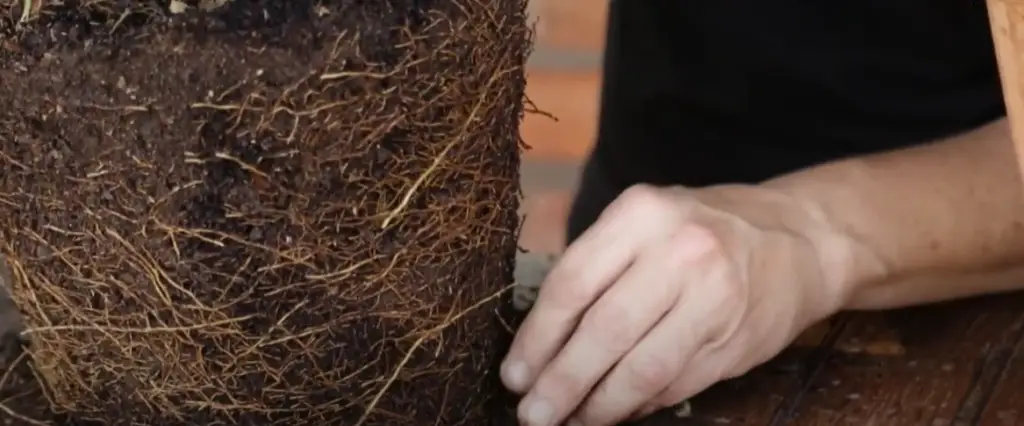
pH Balance
The pH balance of the soil is also very important. Plants need slightly acidic soil to ensure that their roots can absorb all the necessary minerals from the soil. Most potting soils are slightly acidic and should be tested to make sure they are within an acceptable range for your particular plant. If the pH level is too high or too low, you may need to add some lime or sulfur to adjust it accordingly.
Organic Matter
In addition to providing needed nitrogen and other essential minerals, organic matter in potting soil helps to retain moisture and aerate the soil. This can be vital for plants that require more consistent watering, such as succulents. Organic matter also helps provide food for microorganisms like worms and beneficial fungi, which can help keep your soil healthy.
Drainage
Good drainage is essential for any type of soil, but it’s especially important in potting soils. Poorly drained soils will become waterlogged and lead to root rot or other plant problems. The best way to ensure adequate drainage is to mix some perlite or coarse sand into the potting soil before planting. This will help keep excess water from pooling around the roots and give them room to breathe [2].
What Are the Limitations of Using Potting Soil in the Ground?
Lack of Adequate Nutrients
Potting soil lacks the nutrients that are naturally present in natural soil. While it is possible to amend potting soil with fertilizer, this requires additional effort and cost. Moreover, some plants require more nutrients than others, so additional amendments may be necessary for certain species.
Poor Retention of Moisture
In many parts of the world, natural soils tend to be more porous and hold water better than store-bought potting mixes. Over-saturation can also be an issue when using potting mixes due to their lower porosity; meaning that excess water is not able to escape as easily as with natural soils. As a result, plants may suffer from root rot if there is too much water present in the soil.
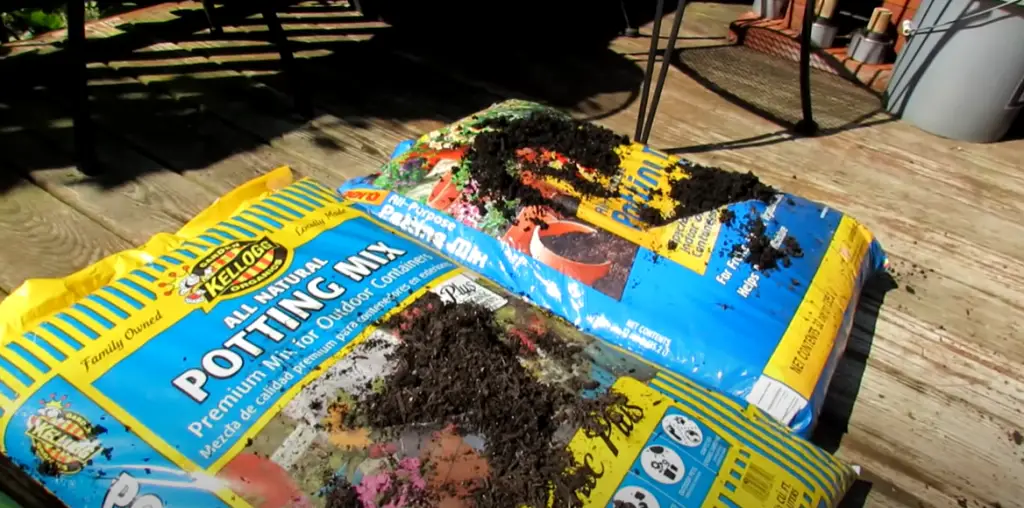
Potential Contamination with Unwanted Substances
In addition to lacking adequate nutrients, potting mixes can also potentially be contaminated with harmful chemicals or pathogens. This is especially true of pre-packaged potting soils that have been stored for long periods and may not be up to current safety standards. To ensure the safety of plants, always purchase potting soil from a reputable source and inspect it for any signs of contamination before use.
Compaction
One of the biggest disadvantages of using potting soil in the ground is compaction. Over time, this can cause harm to plant roots as well as lead to poor drainage and water retention. Compaction can be minimized by mixing large amounts of organic matter into the soil, which helps to improve aeration. Additionally, adding a layer of mulch on top of the soil can help reduce compaction and keep roots healthy.
Weed Growth
Another potential issue with using potting mixes in the ground is weed growth. Many store-bought soils contain weed seeds that can germinate over time and compete with desired plants for resources. To prevent this from occurring, make sure to purchase sterile potting soils or use natural soils instead. Additionally, hand-weeding any areas where weeds are present can help to keep them under control.
Not Ideal for Every Plant
It is important to note that not all plants are suited for potting mixes. Some species require soil with a higher nutrient content or specific pH levels that cannot be provided by store-bought soils. Additionally, some plants may need deeper roots than what can be achieved in a container filled with potting mix. As such, it is best to research the needs of each plant before deciding whether or not to use potting mixes for planting purposes.
It can be expensive
Finally, using potting mixes can be more expensive than utilizing natural soil or compost. Over time, investing in quality organic fertilizers and amendments may add up and leave gardeners with a hefty bill at the end of the season. To help offset costs, gardeners can look for deals on bulk orders or consider making their potting soils from scratch [3].
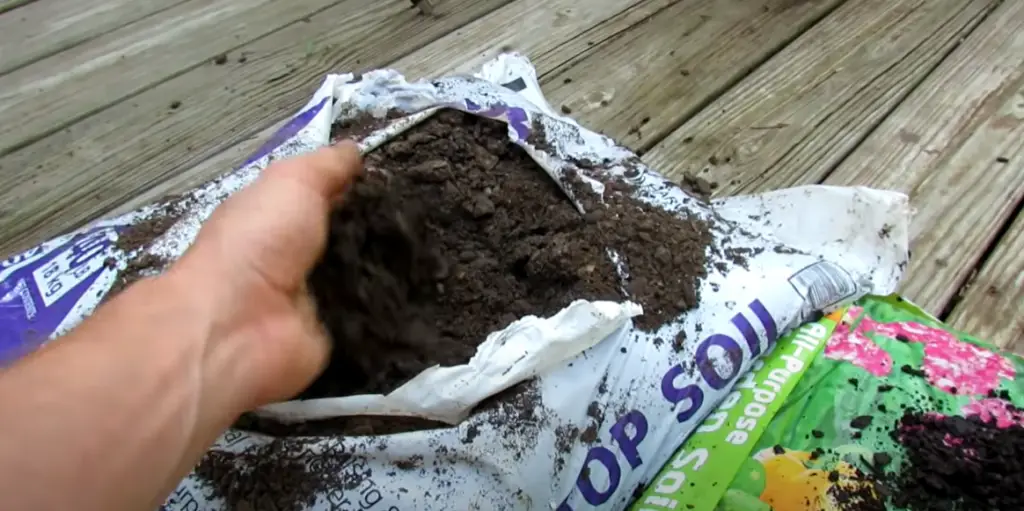
What can potting soils be surely used for?
Potting soils are ideal for a variety of gardening and landscaping needs, from growing vegetables and flowers to potted plants. They provide the necessary nutrients for plants to thrive in an enclosed environment. Potting soils also help retain moisture better than regular garden soil, reducing the need for frequent watering.
Additionally, many potting soils contain additives that can help control pests and diseases or improve drainage. Potting soils are available in both organic and conventional varieties, with some containing fertilizers or other amendments tailored to specific plant types. No matter which type you choose, potting soils make it easier to care for your plants indoors or out!
How do I use potting soil?
Using potting soil is relatively straightforward:
- Start by filling a pot or planter with the potting soil. Make sure to leave about an inch of room at the top for water and plant roots.
- Add your plants, either from seed or already growing in their existing pots.
- Water thoroughly to help settle the plants into place and ensure that all the soil is evenly moistened throughout.
- If desired, add additional amendments such as fertilizer or compost to boost nutrients and improve drainage as needed.
- Keep an eye on your plants over time to check for signs of nutrient deficiencies or pest infestations, adjusting accordingly if necessary!
Once you’ve planted your container garden, enjoy watching your plants thrive! Potting soils are an easy and effective way to help ensure your indoor plants get the best possible start.
FAQ
Why you shouldn’t use potting soil in the ground?
Potting soil is designed to be lightweight and provide a lot of aeration for potted plants. In-ground plants require more nutrient-rich soil that is heavier, so using potting soil in the ground can prevent plants from getting the nutrients they need. Additionally, potting soils often contain fertilizers and other chemicals that can leach into the ground and harm beneficial organisms or disrupt surrounding ecosystems.
For these reasons, it is not recommended to use potting soil in the ground. Instead, use organic compost or garden soil blended with additional organic matter such as aged leaves, grass clippings, or manure for better growth results.
When is it OK to use potting soil in the garden?
If you have sandy soil or clay soil that needs to be amended, potting soil can be useful. It should, however, be mixed with compost and other organic matter to give your plants the nutrients they need. Potting soil is often a great choice for raised beds and containers as it is lightweight and contains peat moss or perlite that helps promote drainage. Additionally, some gardeners prefer using potting mixes in their vegetable gardens instead of traditional garden soils because they are less likely to compact over time. However, if you want to use potting mix in your vegetable garden make sure it is labeled as organic so it doesn’t contain any synthetic chemicals or fertilizers.
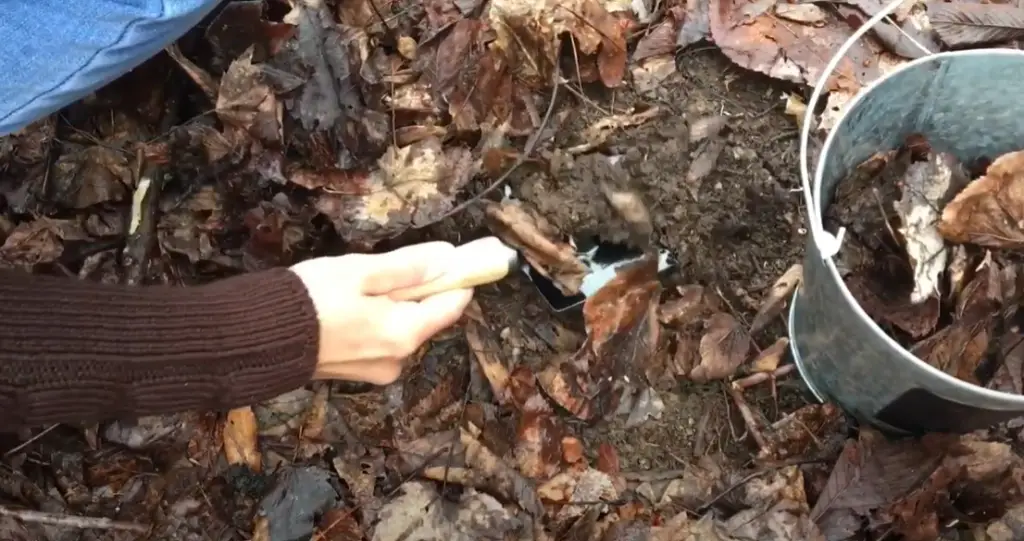
What kind of fertilizer can be used in potting soil?
When choosing a fertilizer for potting soil, look for one that contains balanced levels of nitrogen, phosphorus, and potassium. These three elements are important for providing essential nutrition to potted plants. Additionally, you may want to use an organic fertilizer or slow-release fertilizer to provide continuous nutrition over time rather than sudden bursts. If using a liquid fertilizer, always dilute it to half strength before applying it to potting soil as concentrated solutions can cause root burn. Finally, if you’re not sure which type of fertilizer is best for your plants, check with your local garden center for help.
Can you mix potting soil in the ground?
Mixing potting soil in the ground is not recommended as it can prevent plants from getting the nutrients they need. Additionally, most potting soils contain fertilizers and other chemicals that can leach into the ground and harm beneficial organisms or disrupt surrounding ecosystems. If you have sandy soil or clay soil that needs to be amended, potting soil can be useful. In this case, it should be mixed with compost and other organic matter to give your plants the nutrients they need. However, if you want to use a potting mix in your garden, make sure it is labeled as organic so it doesn’t contain any synthetic chemicals or fertilizers.
Which is the best way to use potting soil?
The best way to use potting soil is for container plants and raised beds. Potting soil is lightweight and contains peat moss or perlite that helps promote drainage, making it ideal for these types of gardening situations. Additionally, some gardeners prefer using potting mixes in their vegetable gardens instead of traditional garden soils because they are less likely to compact over time. However, if you want to use a potting mix in your garden, make sure it is labeled as organic so it doesn’t contain any synthetic chemicals or fertilizers. Finally, when adding fertilizer to potting soil, look for one that contains balanced levels of nitrogen, phosphorus, and potassium and dilute liquid fertilizers before applying them to the soil.
What is the difference between potting soil and ground soil?
The main difference between potting soil and ground soil is the composition. Potting soil is a lightweight, sterile mix of various organic materials such as peat moss, perlite, and bark. Ground soil is made up of dirt, sand, clay, silt, and other natural elements found in nature. Additionally, many potting soils contain fertilizers or other chemicals that can leach into the ground and disrupt surrounding ecosystems whereas ground soil does not. For these reasons, it’s best to use potting soil for container plants and raised beds, and traditional garden soil in the ground.
Can you use potting soil for grass?
Potting soil is not the best choice for grass because it is lightweight and lacks the nutrients that grass needs to thrive. Additionally, potting soil may contain fertilizers or other chemicals that can leach into the ground and harm beneficial organisms or disrupt surrounding ecosystems. The best choice for growing grass is nutrient-rich topsoil specially formulated for lawns. If you’re planting a new lawn, make sure to add compost and organic matter to help create rich, loamy soil. For existing lawns, use a fertilizer specifically designed for lawns to provide essential nutrients throughout the growing season.
How do I transfer plants from pots to garden?
When transferring plants from pots to the garden, it’s important to prepare the soil first. Remove any large rocks and weeds, then add a layer of organic matter such as compost or manure. This will help give your plants the nutrition they need to thrive. Once the soil is ready, dig a hole slightly bigger than the pot and carefully remove the plant from its container. Place it in the hole and backfill it with soil around its roots. Gently tamp down to eliminate air pockets and water thoroughly. Finally, apply a thin layer of mulch around your plant to conserve moisture and discourage weed growth.
Should I throw away old potting soil?
No, you should not throw away old potting soil because it can be reused. Over time, the organic materials in potting soil may break down and lose some of their efficacy, so it’s important to add compost or other organic matter to replenish its nutrients. Additionally, some gardeners prefer reusing potting mix in their vegetable gardens instead of traditional garden soils because they are less likely to compact over time. Finally, if you want to use a potting mix in your garden, make sure it is labeled as organic so it doesn’t contain any synthetic chemicals or fertilizers.
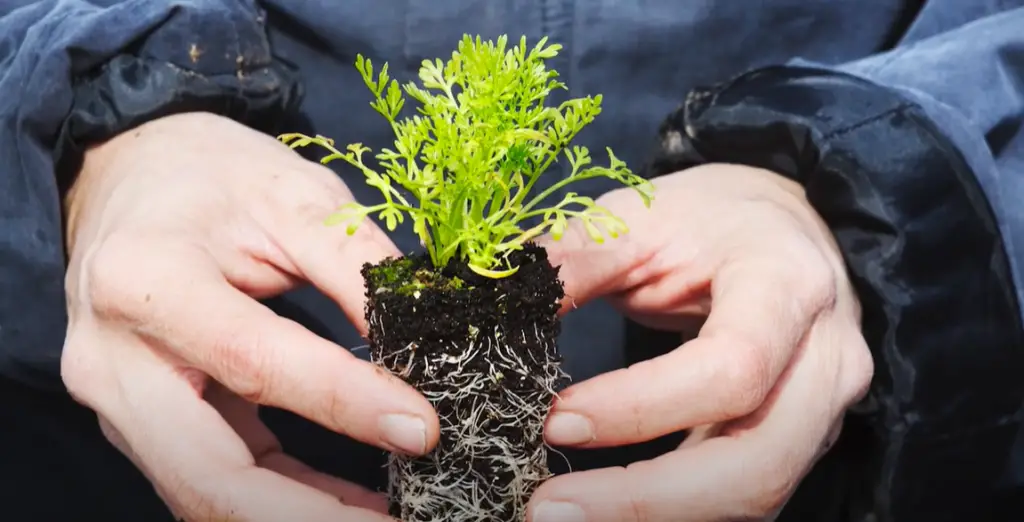
What is the best way to store unused potting soil?
The best way to store unused potting soil is in an airtight container, such as a plastic bucket or garbage can. Make sure the lid is secured tightly so that moisture cannot enter and cause mold or other issues. Additionally, it’s important to keep your potting soil away from direct sunlight and extreme temperatures to prevent it from drying out or becoming too wet. Finally, if you are storing it for an extended period, make sure to turn the soil every few months to ensure proper aeration.
Can dead potted plants compost?
Yes, dead potted plants can be composted. It’s best to remove the plant from its container and break it into small pieces before adding it to your compost pile. For large containers, you may need to break them down with a hammer or other tool. Additionally, make sure to add as much organic matter as possible, such as leaves and vegetable scraps, to ensure that the decomposition process is efficient. Finally, remember to turn your compost pile every few weeks so that air can circulate and all of the materials can break down properly.
What flowers should not be composted?
Most flowers are safe to compost, but there are some exceptions. Flowers that contain toxins or have been treated with synthetic pesticides should not be composted because they could release those chemicals into the soil and contaminate other plants. Additionally, many flowers such as petunias and poppies may contain seeds that you don’t want to spread in your garden. Finally, it’s best to avoid composting any diseased flowers since the disease could spread through the compost pile and affect other plants.
Is dried-out potting soil still good?
Yes, dried-out potting soil can still be used in your garden. It may have lost some of its nutritional value, so it’s important to mix in a layer of compost or other organic matter to replenish the nutrients. Additionally, you’ll want to make sure that the soil is thoroughly moistened before planting your seeds or transferring plants from containers. Finally, if the soil has been sitting for an extended period, it’s best to turn it over and aerate it to ensure proper drainage and air circulation.
Useful Video: Can you use garden soil instead of potting mix?
Conclusion
Using potting soil in the ground helps promote healthy plant growth and can help improve the overall health of a garden. It provides a better environment for plants to take root, providing adequate water retention, nutrients, airflow, and drainage. With its ability to retain moisture, potting soil can help conserve water use in the garden as much as possible. Additionally, it helps prevent weeds from growing in the soil and reduces the need for additional fertilizer or chemical applications. However, it is important to note that potting soil should be changed or refreshed every one to two years to maintain its effectiveness over time. By doing this, gardeners can ensure that their plants receive the best possible care and ultimately reap a bumper harvest.
References:
- https://www.bountifulgardener.com/can-you-use-potting-mix-in-the-ground/
- https://gardeningmentor.com/can-you-use-potting-soil-in-the-ground/
- https://gardentipsforall.com/can-you-use-potting-soil-in-the-ground/





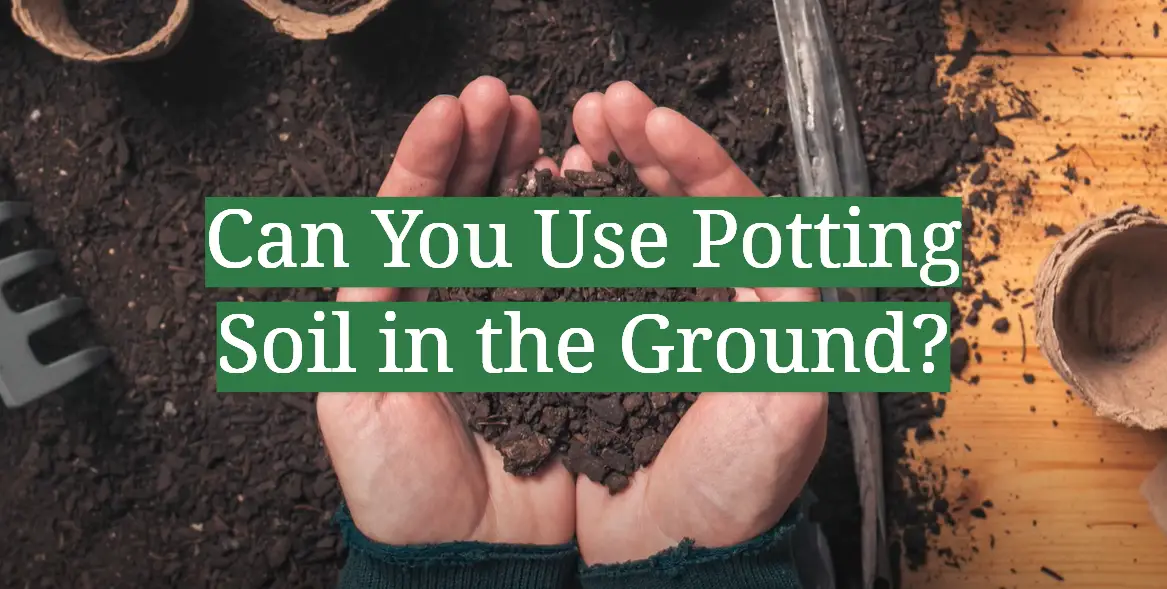




Leave a Reply
View Comments